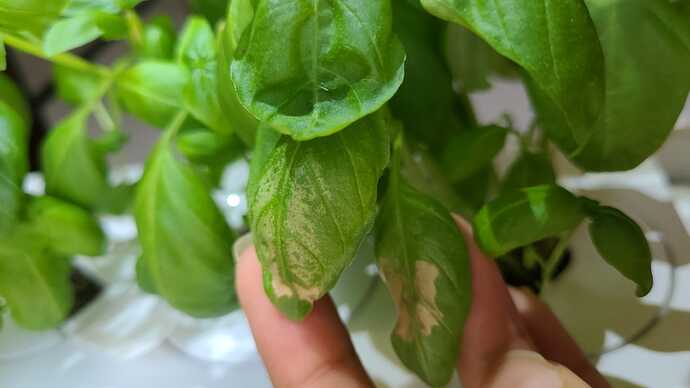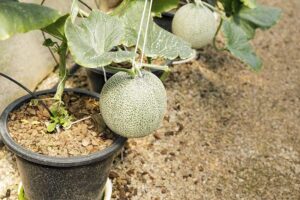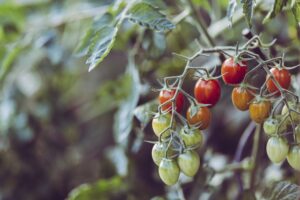
Basil leaves are prized not only for their aromatic leaves but also for their culinary versatility and medicinal properties. However, the sudden browning of basil leaves can be distressing for gardeners and enthusiasts. In this article, we explore the various reasons behind brown basil leaves, their symptoms, and how to prevent or remedy them effectively.
I. Introduction
A. Overview of Basil Plants
Basil, belonging to the genus Ocimum, is a popular herb renowned for its aromatic leaves and culinary applications. From classic Italian dishes to refreshing herbal teas, basil adds a burst of flavor and fragrance to a wide range of cuisines and beverages.
B. Significance of Basil Leaves
Basil leaves are not only prized for their culinary flavor but also for their medicinal properties, including anti-inflammatory, antimicrobial, and antioxidant effects. They contain essential oils, such as eugenol and linalool, which contribute to their distinctive aroma and therapeutic benefits.
C. Concerns Over Brown Basil Leaves
The sudden browning of basil leaves can be indicative of underlying issues that affect plant health and vitality. Whether caused by environmental stressors, pest infestations, or fungal diseases, brown basil leaves warrant prompt attention to prevent further damage and ensure the plant’s well-being.
II. Common Causes of Basil Leaves Turning Brown
A. Environmental Stressors
1. Overwatering
Excessive moisture around the roots can lead to waterlogged soil conditions, depriving the basil plant of essential oxygen and causing root rot. This can manifest as browning of the lower leaves, followed by wilting and overall decline in plant health.
2. Underwatering
On the other hand, insufficient watering can result in drought stress, causing the basil plant to wilt and its leaves to turn brown and crispy. Inadequate moisture uptake can disrupt nutrient absorption and metabolic processes, leading to leaf discoloration and desiccation.
B. Pest Infestations
1. Aphids
Aphids are small, sap-sucking insects that feed on the tender tissues of basil leaves, causing them to curl, distort, and eventually turn brown. These pests excrete honeydew, a sticky substance that promotes the growth of sooty mold, further exacerbating leaf discoloration and compromising plant health.
2. Spider Mites
Spider mites are tiny arachnids that thrive in hot, dry conditions and feed on the sap of basil leaves, leaving behind stippled, discolored patches. As infestations progress, affected leaves may turn yellow, then brown, and eventually drop from the plant, leading to defoliation and reduced vigor.
C. Fungal Diseases
1. Fusarium Wilt
Fusarium wilt is a fungal disease caused by Fusarium oxysporum, which infects the vascular tissues of basil plants, disrupting water and nutrient transport. Affected leaves may exhibit yellowing, wilting, and browning along the edges, followed by stunted growth and plant death in severe cases.
2. Downy Mildew
Downy mildew, caused by the oomycete pathogen Peronospora belbahrii, manifests as yellow or brown patches on the upper surface of basil leaves, accompanied by fuzzy gray or purplish growth on the undersides. This fungal disease thrives in humid conditions and can spread rapidly, leading to defoliation and yield losses.
III. Symptoms and Identification
A. Visual Symptoms
1. Browning of Leaf Edges
One of the earliest signs of stress or disease in basil plants is the browning of leaf edges, starting from the tips and progressing inward. This discoloration may spread along the leaf margins, eventually encompassing the entire leaf surface if left untreated.
2. Yellowing or Wilting
As stressors persist or disease progresses, basil leaves may exhibit yellowing, wilting, and overall decline in turgor pressure. This is often accompanied by browning or necrosis of leaf tissues, indicating cellular damage and impaired physiological function.
B. Physical Examination
1. Presence of Pests
Inspecting the undersides of basil leaves may reveal the presence of aphids, spider mites, or other insect pests feeding on the plant tissues. Look for characteristic signs of infestation, such as stippling, webbing, or the presence of insect eggs and exuviae.
2. Signs of Fungal Growth
Fungal diseases such as downy mildew may produce characteristic symptoms on basil leaves, including fuzzy gray or purplish growth on the undersides, along with yellow or brown patches on the upper surface. These signs of fungal infection are often accompanied by leaf distortion and chlorosis.
C. Comparison with Healthy Leaves
Comparing affected basil leaves with healthy ones can help discern abnormal discoloration, wilting, or other symptoms indicative of stress or disease. Healthy basil leaves typically exhibit vibrant green coloration, turgid texture, and uniform leaf margins without signs of discoloration or damage.
IV. Prevention and Treatment
A. Environmental Management
1. Proper Watering Practices
Maintain optimal soil moisture levels by watering basil plants deeply and infrequently, allowing the soil to dry out slightly between waterings. Avoid overwatering or underwatering, as both can lead to stress, root rot, and subsequent leaf browning.
2. Adequate Sunlight and Air Circulation
Provide basil plants with adequate sunlight and air circulation to promote vigorous growth and reduce the risk of fungal diseases. Position plants in a sunny location with good airflow, spacing them appropriately to prevent overcrowding and humidity buildup.
B. Integrated Pest Management
1. Natural Predators
Encourage natural predators such as ladybugs, lacewings, and predatory mites to control aphid and spider mite populations in the garden. These beneficial insects help maintain ecological balance and suppress pest infestations without the need for chemical pesticides.
2. Organic Pest Control Methods
If pest infestations occur, employ organic pest control methods such as insecticidal soap, neem oil, or botanical insecticides to target aphids, spider mites, and other pests. Apply treatments as directed, taking care to cover the undersides of leaves where pests tend to congregate.
C. Disease Prevention Measures
1. Crop Rotation
Practice crop rotation to prevent the buildup of soilborne pathogens such as Fusarium oxysporum, which cause fusarium wilt in basil plants. Rotate basil with non-host crops to break the disease cycle and reduce the risk of infection in subsequent plantings.
2. Fungal Treatments
Apply preventive fungicides or biofungicides containing beneficial microorganisms to protect basil plants from fungal diseases such as downy mildew. Treat plants prophylactically or at the first sign of disease, following label instructions and safety precautions.
V. Conclusion
A. Importance of Basil Leaf Health
Maintaining the health and vitality of basil leaves is essential for ensuring optimal flavor, aroma, and nutritional value in culinary applications. By addressing the underlying causes of brown basil leaves and implementing preventive measures, gardeners can promote the longevity and productivity of basil plants.
B. Encouragement for Proper Care
Aspiring gardeners are encouraged to monitor basil plants regularly for signs of stress or disease and take proactive measures to address any issues promptly. By practicing good cultural practices and integrated pest management techniques, they can enjoy healthy, vibrant basil plants year-round.
C. Final Thoughts
In conclusion, brown basil leaves can be attributed to various environmental stressors, pest infestations, or fungal diseases that affect plant health and vitality. By understanding the causes, symptoms, and prevention strategies outlined in this article, gardeners can effectively manage brown basil leaves and promote the long-term success of their basil plants.






